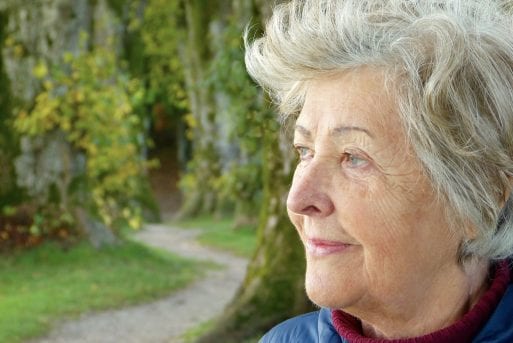
Future senior living models could see more green space.
At the best of times, Americans have grappled with the downsides of traditional senior living models, including high price tags, loss of privacy and independence, and a reduced quality of life. Now, the COVID-19 pandemic has raised another serious concern: early death.
Nursing homes and assisted living facilities have borne the brunt of the pandemic, accounting for more than 40 percent of deaths nationwide, according to the nonprofit Foundation for Research on Equal Opportunity. This is an astounding figure considering that long-term care facilities report just 11 percent of cases, as The New York Times found in an independent analysis. And the U.S. is not alone: Countries including Canada, Sweden, Ireland and France have also reported that more than 40 percent of their COVID-19 deaths occurred in long-term care, according to the International Long Term Care Policy Network.

In U.S. care homes, the common risk factors of age, illness and living in close quarters have been compounded by a severe lack of personal protective equipment. While the Federal Emergency Management Agency recently delivered shipments of PPE to nursing homes, some healthcare workers complained to CNN that the gloves and masks issued were substandard or even “unusable.” Meanwhile, assisted living facilities, continuing-care retirement communities and home healthcare agencies have been left largely to fend for themselves. “Too many aging-services providers are still in desperate need of testing, personal protective equipment and emergency funding,” Katie Smith Sloan, CEO of the nonprofit LeadingAge, recently told The Wall Street Journal.
New Models in Senior Living
Experts are predicting that the high number of deaths and extended isolation due to quarantine could lead to major shifts in senior living models — and encourage more aging in place. “There’s a great danger that the boomers will view senior living as equating to senior dying,” aging consultant Robert Kramer, president and founder of Nexus Insights, told Barron’s in an article outlining potential changes.
Current models for senior living vary greatly, ranging from nursing homes or assisted living set-ups to more independent communities or memory care facilities. Bob Stephen, the vice president of caregiving and health at AARP, suggested that interest may grow in approaches such as the village model, in which microcommunities of older adults are supported by staff and volunteers and can develop their own pandemic response. Meanwhile, facilities are coming up with innovative ways to enable connection despite physical distancing, such as clear panels through which residents can interact with family members. One nursing home in Brazil even devised a plastic barrier with arm holes that allows residents to hug their loved ones.
Future senior living models could see fewer units per building, communal dining adapted to smaller groups, enhanced outdoor spaces, readily available telemedicine or a doctor on site, and air-conditioning and heating systems with reduced circulation areas. But Kramer said it will take more than COVID-19-inspired enhancements to bring aging baby boomers on board. Rather, he said, they’ll be drawn by initiatives such as volunteer opportunities and multi-generational activities. “People don’t want to turn 75 and be entertained until they die as if they don’t have anything to give,” he said.

 Senior Living Models Hard-Hit by COVID-19 Could Inspire Change
Senior Living Models Hard-Hit by COVID-19 Could Inspire Change



 How to Comfort A Dying Loved One
How to Comfort A Dying Loved One
 Our Annual Seven Holiday Gifts for Someone Who Is Grieving, 2024 Edition
Our Annual Seven Holiday Gifts for Someone Who Is Grieving, 2024 Edition














